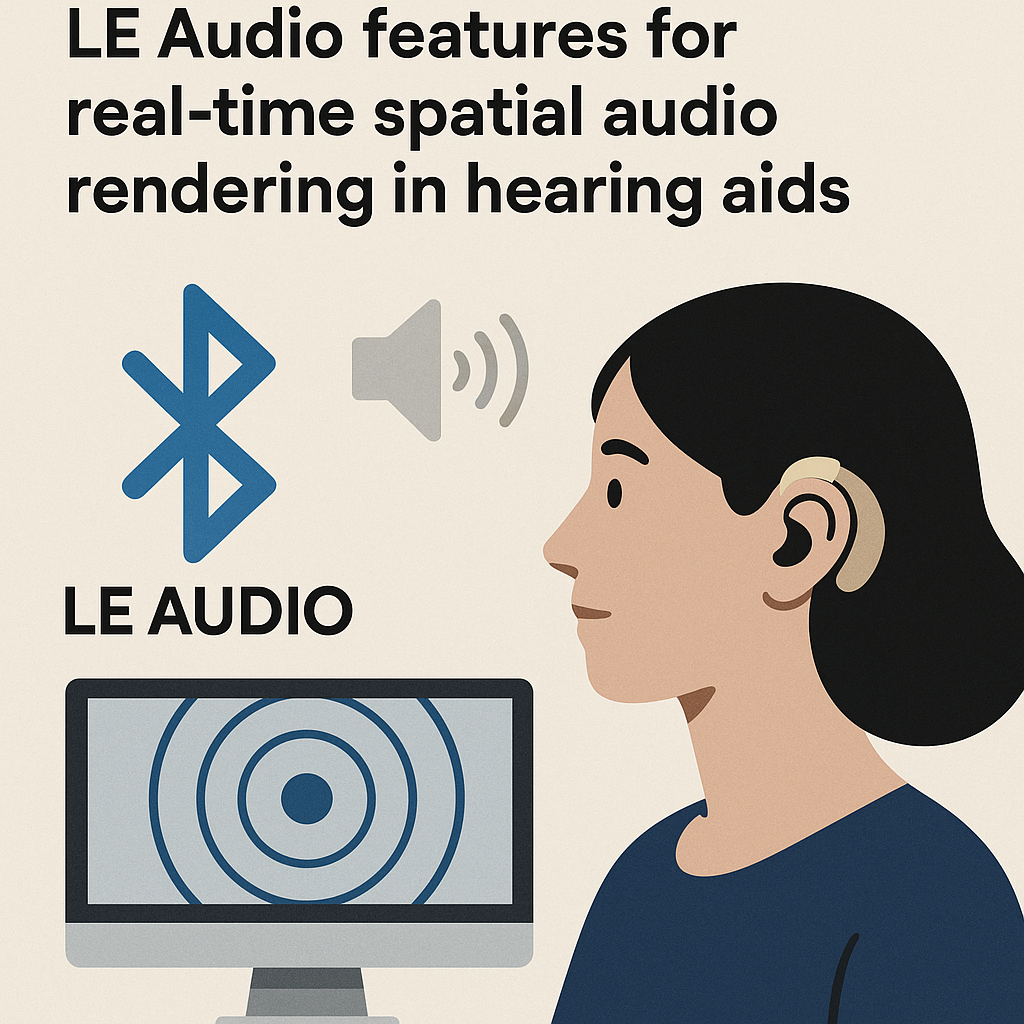Introduction
The world of audio technology is constantly evolving, and one of the most significant advancements in recent years has been the introduction of Bluetooth SIG’s new LE Audio features. These innovations have the potential to revolutionize hearing aids, particularly through real-time spatial audio rendering. In this blog post, we will explore the key features of LE Audio and its implications for hearing aids, enhancing the listening experience for users.
Understanding LE Audio
LE Audio, or Low Energy Audio, is a new standard developed by the Bluetooth Special Interest Group (SIG) that aims to improve audio performance and efficiency. Unlike traditional Bluetooth audio, LE Audio is designed to work with low-power devices, making it particularly suitable for hearing aids. Here are some of the most notable features:
- Multi-Stream Audio: This feature allows multiple audio streams to be sent to a single device simultaneously. For hearing aids, this means that sounds from different sources, such as conversations or environmental noises, can be processed and rendered separately.
- Audio Sharing: LE Audio enables users to share audio streams with others nearby. This capability is especially beneficial in social settings, where multiple users can listen to the same audio source, such as music or dialogue from a television.
- Improved Battery Life: By utilizing low energy consumption, LE Audio can significantly extend the battery life of hearing aids, allowing for longer periods of use without frequent recharging.
- Enhanced Sound Quality: The new audio codecs incorporated in LE Audio, such as LC3, provide higher fidelity sound and better performance in challenging environments.
Real-Time Spatial Audio Rendering
One of the standout features of LE Audio is its ability to support real-time spatial audio rendering. This technology enables hearing aids to deliver a more immersive sound experience by simulating three-dimensional audio environments. Here’s how it works:
- Directional Hearing: Spatial audio rendering allows users to perceive sound directionality, making it easier to focus on specific sounds in a noisy environment. This is particularly useful in social situations where multiple conversations may be occurring simultaneously.
- Environmental Awareness: With improved spatial awareness, users can better detect sounds from their surroundings, enhancing safety and overall situational understanding.
- Personalized Audio Experiences: Hearing aids can adjust sound profiles based on user preferences and listening environments, providing a tailored auditory experience.
Benefits for Hearing Aid Users
The introduction of LE Audio and its spatial rendering capabilities presents numerous benefits for hearing aid users:
- Improved Communication: Users can more easily engage in conversations, especially in crowded or noisy environments, leading to a more fulfilling social life.
- Enhanced Accessibility: The ability to share audio and stream content can make entertainment more enjoyable for users, allowing them to connect with friends and family over shared experiences.
- Greater Independence: With better environmental awareness and directional hearing, users can navigate their surroundings more confidently, reducing reliance on others.
Challenges and Considerations
While the advancements in Bluetooth LE Audio are promising, there are important considerations and challenges that need to be addressed:
- Compatibility: As with any new technology, compatibility with existing devices and hearing aids can be an issue. Manufacturers will need to ensure that new features are widely adopted and supported.
- User Education: Users may require guidance and education on how to effectively utilize the new features, as well as understanding the benefits they offer.
- Development Costs: Integrating LE Audio technology into hearing aids may lead to increased production costs, which could affect pricing for consumers.
Conclusion
Bluetooth SIG’s new LE Audio features, particularly real-time spatial audio rendering, have the potential to transform the hearing aid industry. By improving sound quality, user experience, and accessibility, these advancements can significantly enhance the quality of life for hearing aid users. As technology continues to evolve, it will be exciting to see how these innovations shape the future of audio experiences in hearing aids, ultimately leading to better communication and interaction for those with hearing impairments.



